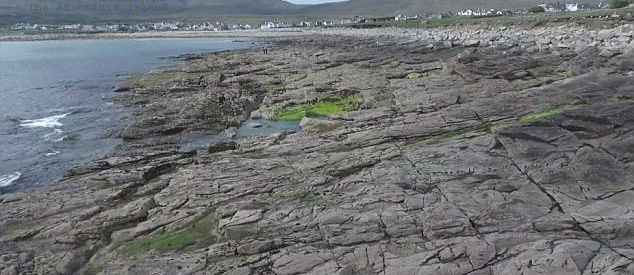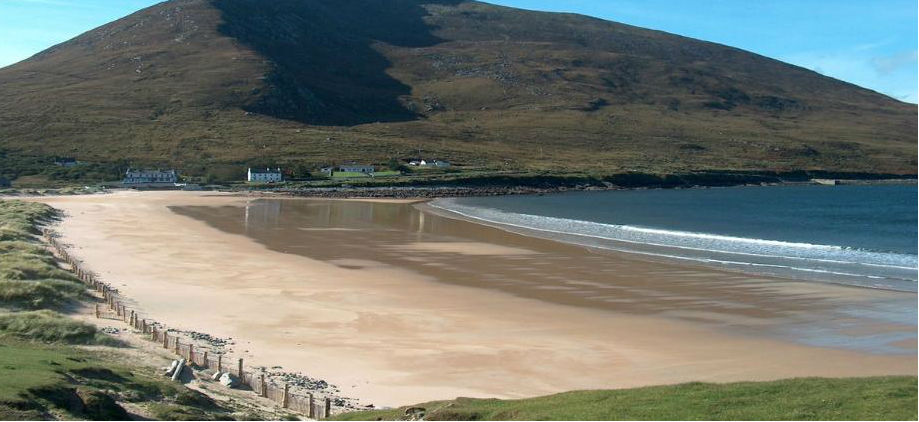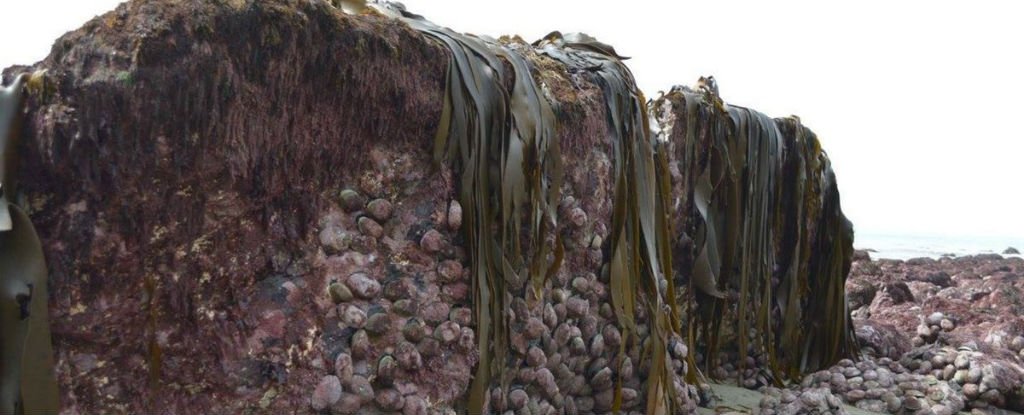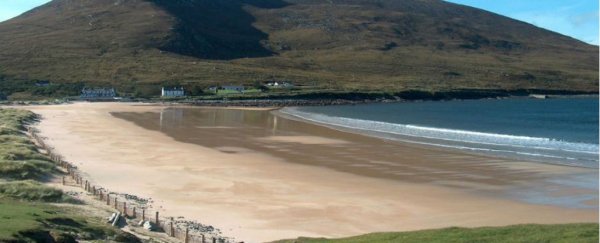Back in 1984, violent storms in northwest Ireland did the unthinkable - together, they stripped an entire beach away from the coast, leaving locals with nothing but bare, grey rock pools where fun goes to die.
But sometimes nature gives us a break, because a freak tide has appeared off the coast of Achill Island to dump hundreds of tonnes of sand back on the rocks, building up the beach that disappeared more than three decades ago.
"Some big storms destroyed the beach. It was completely washed away, and 1984 was the last time the beach was there," manager at Achill Tourism, Sean Molloy, told Henry McDonald at The Guardian.
"Then in April we had that cold snap over Easter and the wind was coming from the north. It was steady and must have transported sand in from elsewhere."
After the tide managed to bring in enough sand all at once to create a whole new beach, locals have reported a 300-metre (984-foot) stretch of sand that seems to be staying put - for now.
Here's a before shot:
 Achill Tourism
Achill Tourism
And here's what it looks like now:
 Achill Tourism
Achill Tourism
Weirdly enough, this isn't the first time this beach has disappeared from Dooagh, a village on Achill Island, only to return to its formal glory several decades later.
Molloy told Lorna Siggins at The Irish Times that a similar event occurred in the 1890s, when the beach was washed away from its rocky base. By the 1930s, the sand had reformed once more, and a pier was built on site.
So why does this keep happening?
Oceanographer Ivan Haigh from the University of Southampton in the UK told the Weather Channel that the sand on the Dooagh coastline uniquely affected by the whims of the ocean and the weather, while at the same time, extra sediment is actually being made available from hundreds of kilometres away.
"Sand along the coast is in a constant state of flux, moved by storms, waves and wind. It is also influenced by the available supply of sediment from stretches of coastline many hundred kilometres away," he said.
"The strength of storm and waves, change on decadal time-scales - and it is also possible that environmental conditions have altered, providing the ideal conditions for a fresh build-up of sand."
Of course, let's all remember that nature isn't here to suit our beach-faring needs, and can just as easily do really bizarre things that don't seem to benefit anyone - specifically the sealife that found themselves stranded when an earthquake exposed 2 metres of seabed in New Zealand late last year.
 New Zealand seabed. Credit: Anna Redmond/Facebook
New Zealand seabed. Credit: Anna Redmond/Facebook
There's no telling how long Dooagh's long-lost beach will remain on the coast, but at least it's just in time for summer.
